Share
Hockey in India was vibrant even in the last quarter of the 19th century. The sport proliferated the length and breadth of the country. From Srinagar to Chennai, Lahore to Dhaka and even from the far fringes of Peshawar came teams to participate in a surfeit of tournaments like the Beighton Cup, the Aga Khan and the MCC tournament to name a few. It was only a matter of time, then, that a national governing body would be formed. This Part VI in the Series, dwells on this defining moment for hockey in India – Editor
The first attempt at forming a national association took place in Calcutta (now Kolkata) around 1907. The move was revived in 1921 by Charles E Newham, who founded Punjab Hockey Federation. He was its first president, ably assisted by Guru Datt Sondhi, later principal of Government College. Newham and Sondhi were both educated at Cambridge University in the UK.
The environment at that time was that various hockey organisations, provincial, regional and institutional, were being founded all over India. Associations like Bengal, Western India and Punjab only controlled hockey in their local towns. Their main functions were to organise in their towns the All-India tournaments, to which teams came from all over the country. They had no jurisdiction over the visiting teams, and if, as sometimes happened, a player was suspended for rough play, there was nothing to prevent him from playing next day in a tournament organised by another province, even if it happened to possess an association.
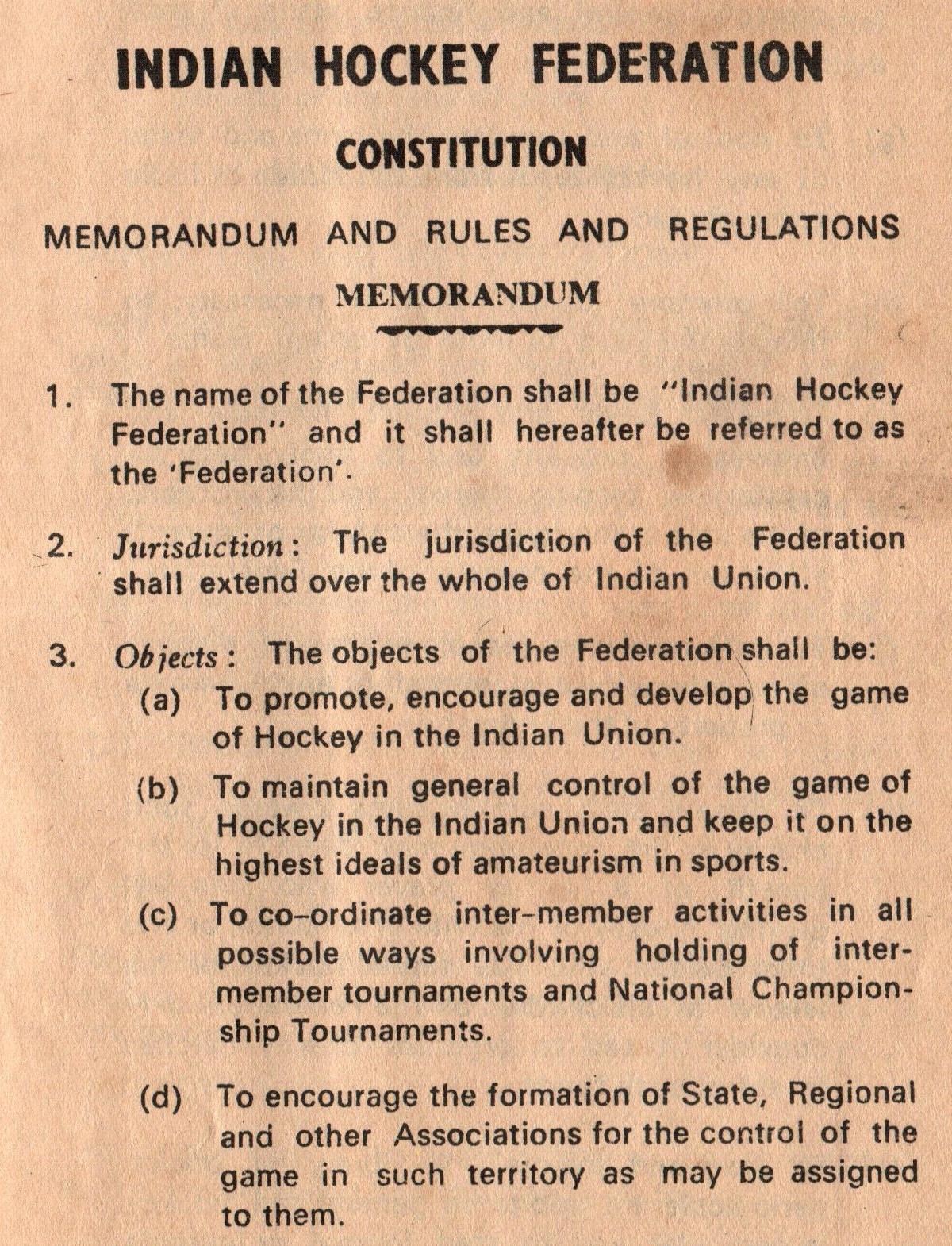
The opening page of the IHF Constitution
In November 1924, during the Scindia Gold Cup tournament in Gwalior, at the request of the now defunct Western India Hockey Association, Lieutenant Colonel Charles Eckford Luard CIE, then President of Gwalior Sports Association, addressed all hockey associations, clubs and individuals interested in the game. He invited them to a meeting in Gwalior during the Scindia Gold Cup tournament the following year.
Colonel Bruce Turnbull representing the Army Sports Control Board attended that meeting in November 1924 and succeeded in getting his draft of constitution accepted. This draft was sent out to the various hockey playing centres, informing them of the proposed meeting in 1925.
The inaugural meeting of the Indian Hockey Federation was held in the Moti Mahal, Gwalior, on November 7, 1925 during the Scindia Gold Cup tournament and lasted four hours during which various matters of importance were thoroughly examined.
Many representatives of individual clubs were present and the following provincial hockey associations were represented as follows:
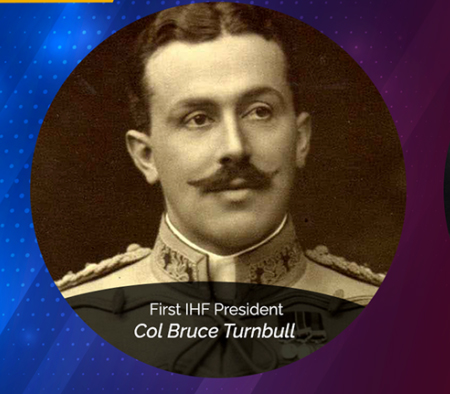
Army Sports Control Board by Colonel Bruce Turnbull,
Bengal by Albert Barmes Rosser
Punjab by Charles E Newman,
Western India by Battacharjee
Gwalior by Professor Gangulee,
Other Punjab representatives were Professor Guru Datt Sondhi on behalf of Punjab University, and Mr Smith on behalf of North-Western Railway.
Colonel Kailas Narayan Haksar, CIE, President of the Gwalior Sports Association, was in the chair. He proposed a formal resolution “that a Central Association for the control of hockey be created for India”. The motion was passed unanimously.
Haksar had became a minister in the Gwalior State and then in the J&K Govt.
Colonel Haksar had already expressed his opinion that for the purposes of voting only those should be eligible who were present as accredited representatives of provincial associations, but a very long discussion ensued, which resulted in permission for all present to record their opinion by vote, thereby placing provincial representatives very much in the minority.
An equally long discussion followed as to where the headquarters of the Central Organisation should be situated, and the only agreement attained was that it must be where an honorary secretary could be found willing to do the spade work for the first year. It was eventually decided that the headquarters should be regarded as temporary for the first year. Gwalior was strongly supported by the local representatives, and Delhi or Cawnpore by northern delegates, while Mr Rosser suggested Calcutta, and would have met with much support had he been able to undertake the duties himself.
Mr Newham proposed, and Mr Smith seconded, that Mr Lovell Hudson, of Lahore Gymkhana, should be elected temporary secretary and this was supported by Colonel Turnbull and Professor Sondhi, but the local representatives were too thickly mustered in favour of Mr Ansari of Gwalior. The chairman ruled further discussion out of order, and by the majority vote of the meeting Mr Ansari was appointed to carry on for the current year, with headquarters at Gwalior. There wasan effort to compromise by suggesting that Messrs Rosser and Ansari could be appointed as joint secretaries for one year but that motion failed.
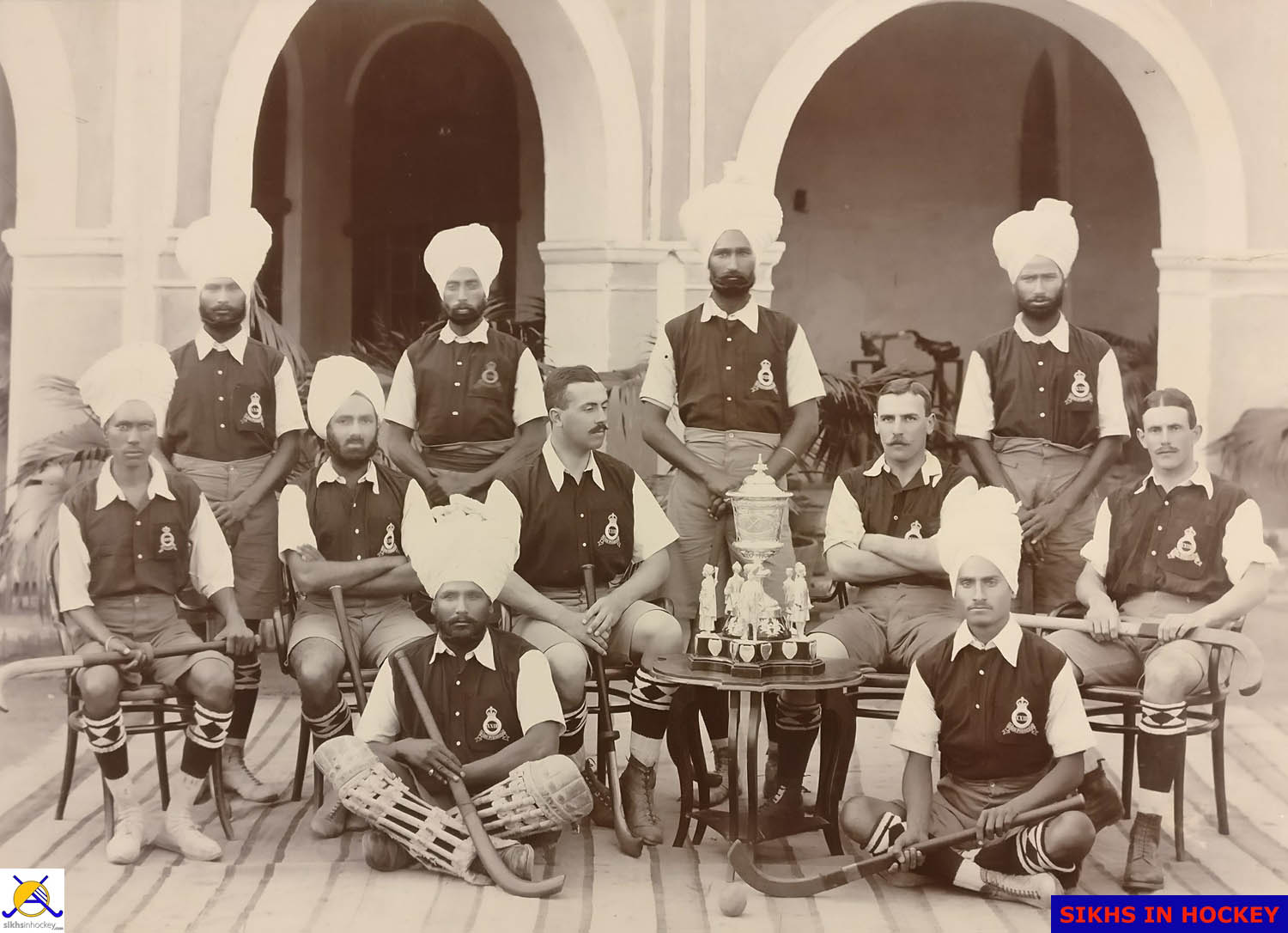
Bruce Turnbull, seated third from left, was elected first president of the IHF in 1925
Colonel Bruce Turnbull who had served and played hockey for the 23rd Sikh Pioneers (pic above) since 1901 was elected President.
As the majority of the work is to be done by provincial associations, it was unanimously decided that the name of the Central Organisation should be the “Indian Hockey Federation.”
The draft rules were then scrutinised one by one and, as finally amended, passed by the meeting. It was decided not to proceed with an umpires’ organisation for the whole of India, as it was largely a provincial matter.
Two important rules were included in the general code as follows:
No affiliated club, nor any player or member of such club, shall institute, or take part in any hockey challenge cup, or prize, competition, unless such competition:
(a) Has been sanctioned by the council, or by a provincial association; or
(b) Has been sanctioned by the body recognised by the I.H.F. as controlling hockey in that area; or
(c) Has received the special sanction of the council of the I.H.F. in the event of there being no controlling body in the area.
Any players receiving, directly or indirectly remuneration of any sort, in addition to his railway (or road) fare and necessary accommodation expenses actually paid, shall be considered a professional, and shall be excluded from the provincial association concerned. Any club playing such players shall also be so excluded. Training expenses which are not paid by players themselves will be considered as remuneration beyond necessary travelling and accommodation expenses.
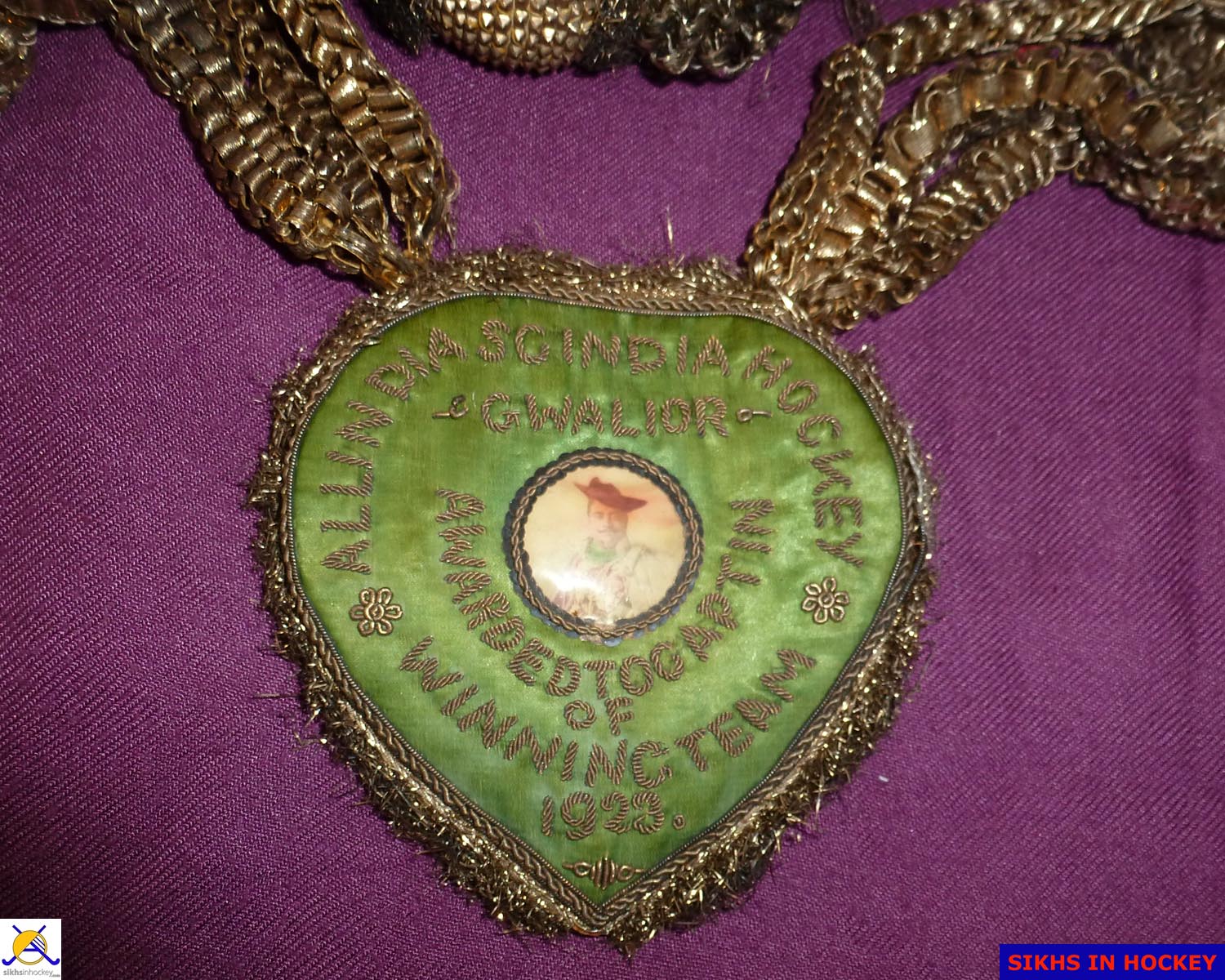
Medal awarded for the Scindia Gold Cup winners
The Indian colours were also decided; blue shirts with white sleeves and collars and the star of India on the pocket was decided. Others include dark blue shorts, dark blue and light blue ringed stockings, white sweaters, dark blue and light blue striped scarves, dark blue blazers with the star of India on the pocket.
The control of hockey in India was vested in the Indian Hockey Federation which in turn decentralised to the various provincial hockey associations. Other smaller states and the Army Sport Control Board (India) were also affiliated to the I.H.F.
Major Ian Burn-Murdoch of 32 Sikh Pioneers followed Colonel Bruce Turnbull as President of Indian Hockey Federation from 1927 to 29. He was responsible for selecting the team for the Amsterdam 1928 Olympic Games. T P Gately was elected as secretary in 1927 and the headquarters moved to Delhi.
The I.H.F. as an institution enabled India channel its myriad talent into a supply line to the national team which paraded its wares at the 1928 Amsterdam Olympics.
The Games there set the stage for a new order that was to present an indomitable force that would rule for more than three decades evinced by a haul of eight Olympic gold medals and a World Cup title.
Poignantly, that institution no longer exists. The I.H.F. was sent into oblivion in 2008, less than a century of its inception.
For all that, the I.H.F. cannot be ignored in any historical treatise on the sport in India. After all, it launched hockey as a sport that, for quite a while, was considered synonymous with the country itself.

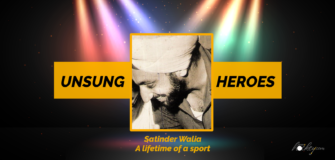

The name of IHF is unique and historical. The same name should have been continued. I feel so after reading the article as it emphasizes the historical significance of the IHF.
Its a long, useful essay. Thanks for bringing all these information to public. It seems so much on Indian hockey is still unsaid.